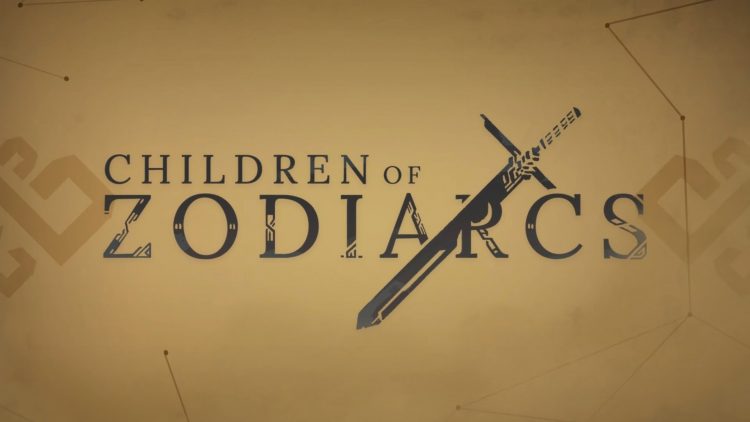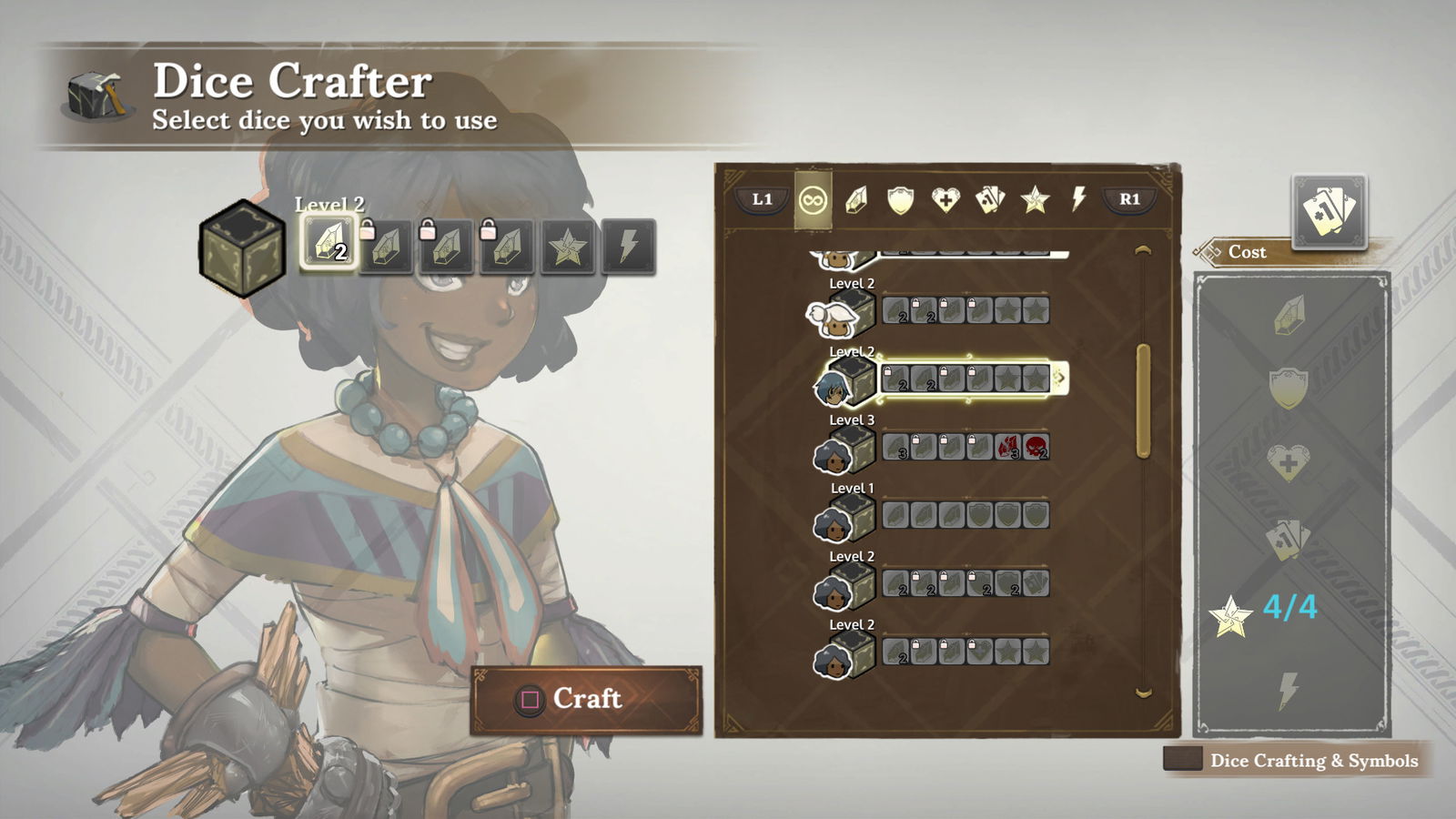Roll that dice and pick a card!
Truth be told, I’ve been invested in action-RPG games ever since Final Fantastic Tactics. It had the right amount of RPG elements, it was story-driven and it was the perfect way to waste some time. So when I first heard about Cardboard Utopia’s, Children of Zodiarcs, I was curious. I hadn’t played one in a while and this one had an interesting spin – it incorporated a dice and card deck building system. That sounds pretty cool and thus, I had to check it out.
Game Name: Children of Zodiarcs
Platform(s): PC/Steam, also on PlayStation 4
Publisher(s): Square Enix Collective
Developer(s): Cardboard Utopia
Release Date: July 18, 2017
Price: $17.99
Update: This review was delayed as Cardboard Utopia was in the middle of adding several requested changes. As such, I didn’t feel it would be right to review the title with these changes coming out shortly.
When you first start out with Children of Zodiarcs, you’re engaged with several characters who are trying to “liberate” a certain relic. Truth be told, you’re actually stealing it, in an attempt to sell it and enjoy a something limited lifestyle. Along the way, you find out more regarding the characters you’re playing as and the struggles they endure and who exactly is causing these struggles. It’s not a grand story and it won’t tug at your heart strings, but it is a decent attempt at story-telling.
Children of Zodiarcs is a departure from the typical tactical RPG as it uses both a turn-based combat system, but also tosses in both dice and cards. So in the traditional sense, the game does play like an RPG, but it is the dice and cards that help enhance the gameplay. And if that sounds like a table top game, well that’s because it is. The merging of two different game types and it’s not bad at all.
During a battle, you have several options – placing your character on the map, attacking, dragging a card or guarding against attacks. Combat is handled via dice rolls while rolling the dice will provide you with several different buffs or debuffs. Some grant healing, attack strength and other various bonuses A nice touch is after the initial dice roll, you can select a number of dice and re-roll them for a chance at better buffs. It definitely was an interesting take on the combat system, though after my first hour or so, it all started to click. Though it is possible to abuse the system, to basically get free perks during combat. I’m pretty sure this was intentional and I quite enjoyed having the ability to spam heals, saving my actual turns for during some damage to my enemies.
That all said, rolling the dice is time-consuming and takes up precious moments that could be spent formulating strategies or executing abilities. It wouldn’t be so bad if you didn’t have to actually roll the dice via using the analog stick. You can’t fake it either as the game will tell you that you need to roll them faster. Thankfully you can let the computer roll the dice for you. Outside of the dice rolls, you also have playing deck cards that are used for attacking and healing. Each character starts off with a limited number of cards, which will grow as they level up.
Then there’s the crafting aspect to the game. Outside of battles, you have the ability to shuffle around the cards and even build decks via a “lite” deck builder. I say lite as it doesn’t really give you much leeway, which can serve to frustrate those who enjoy deck-building that frequents other games. It is quite limited and ultimately doesn’t serve to introduce much min/max tweaking. There is an option to let the CPU build your deck and it typically does a good job of doing so. You can also craft your own dice and equip them, giving you an advantage during battle. It can get time-consuming, but definitely worth it.
Depending on the situation, you have several options at your disposal – Attacking the enemy via melee, ranged or magical abilities, supporting other members by providing heals, putting up a defensive by guarding or choosing to draw several cards from your deck. While it doesn’t seem overly complex, you have to keep in mind that each character has a specific role. Some can play both as a support and DPS, while others are straight DPS or even tanks. You will have to manage not only healing but also keeping a steady amount of damage on the enemies. Do too little and you get overrun, while neglecting to keep your characters alive will, in turn, put you in some difficult situations.
Cardboard Utopiaeven has also included the ability to speed up the combat, outside of your turn that is. And I applaud this decision, especially when you encounter a battle that has way more enemies than you have heroes. These sort of battles simply take a long time and sadly drag out the game. So being able to speed through the battles is a godsend.
You can go back and earn cards and dice pieces in fights that take place outside of the story, called skirmishes. If you’re feeling like you barely made it through a level, picking up a few scrims will help you beef up your characters. sadly, there is a certain boss that I had to grind out skirmishes in order to beat. Another nice touch is that your characters are able to level up during battle. While more recent games force you to wait until your battle has ended, characters earn experience on each turn. This can allow characters to level up, learning new cards as well. You won’t be able to use those cards until you add them to your deck, however.
The game is played out in a 3d isometric view. Graphically, won’t win any awards for its looks but it does a good job conveying the locations found in the game. Towns, castles and other locations that you play through have subtle touches like streams, rooftops, and other items. With the isometric view, you’re able to spin and pan the camera around the map, ultimately to get a better vantage point. It doesn’t always work that way. Stages with lots of buildings or other structures tend to obstruct your vision and the only way to see the level is to rotate the camera. The problem with that is that you aren’t always assured a good view and at times this leaves you at a disadvantage, with only viewable parts are horizontal. Even then, this will cause issues if you are forced to rotate the camera and suddenly lose track of a character due to them being hidden by yet another structure. The animation in the game isn’t too shabby, either. Little touches such as characters digging into their bag as if they were searching for a desperately needed item help sell the game. The music was full of dramatic and orchestra tunes, yet heavily recycled. In the end, none of them were very memorable. The sound effects shared the same fate as they were basic, though they managed to serve their purpose.
*This copy of Children of The Zodiarcs was provided to The Outerhaven by the publisher for review purposes. For more information on how we review video games and other media/technology, please go review our Review Guideline/Scoring Policy for more info.*
Affiliate Link Disclosure: One or more of the links above contain affiliate links, which means at no additional cost to you, we may receive a commission should you click through and purchase the item.
Want more game reviews from The Outerhaven? Consider the following:
Splatoon 2 Nintendo Switch Review
Mega Maker Review
Valkyria Revolution (Xbox One) Review
Children of Zodiarcs Review
Summary
Verdict
All in all, Children of the Zodiarcs is a handsome merging of two beloved game types and one that manages to capture the best of them. Despite starting off slow, the game makes for it by tossing several challenging battles at you, which keeps you on your toes. The dice and playing cards system were an interesting touch, and I ended up enjoying it more than I originally thought. Hopefully, this can be expanded on in the sequel – that is if there is one.
If anything hurts this game, it is those moments when the camera angle, despite how you rotate the camera, it just doesn’t play fair at times.
-
Witty sentence here and the score. remember to use the star system!




